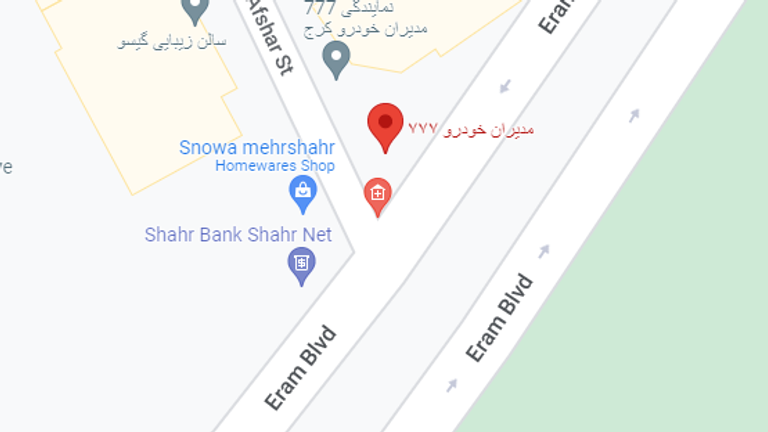Consider yourself lucky if you are reading this, you most likely not to have lived in a society with extreme judgements, sentences, and punishments. Back in the good old days if you did something wrong, for example stole a goat, chicken, Adultery, you were pretty much assured being handed a death sentence. In those days there was no hanging around on Death Row, contemplating the errors of your ways whilst waiting for some form of humane, painless death. Executions in the ancient history seems to be so barbaric and devices used were built with careful engineering to push the guilty to feel extreme and prolonged pain before death. The forms of execution listed below really are so barbaric that you might question your faith in human nature. Blowing from the gun. With the invention of the cannon came this wonderfully imaginative way of executing enemy combatants. The basic method was to tie the unfortunate victim to the barrel of a cannon and fire it. Horrific as this sounds I imagine it w...
Hadith Najafi is an internet personality. She had made various TikTok videos against the terrorist government and participated in many protests against the government.
Hadis Najafi took to the streets of Karaj last week in protest at Iran's hijab mandate and was shot dead. She was not openly outspoken about women's liberation, but enjoyed sharing her life with her followers on social media.

Play Video - Outcry over TikToker killed in Iran
Hadis Najafi spoke out against Iran's strict hijab mandate and was She was not an activist, or openly outspoken online about women's liberation, but she was still gunned down in her home city campaigning for her right to live and dress how she wanted.
Hadis Najafi, 23, took to the streets of Karaj last week to speak out against Iran's strict hijab mandate and was shot dead.
Her death has fuelled further anger in a country already reckoning with the strict rule of the so-called morality police.
Part of Iran's Generation Z, Hadis was a young woman who grew up in the age of the internet and social media.
Like Zoomers everywhere, these digital natives are connected to the rest of the world in a way their parents could never have imagined.
Hopes for a better future
An avid user of TikTok and Instagram, Hadis enjoyed sharing her life with her followers on social media.
She was not openly outspoken about women's liberation, but she posted videos on her TikTok account dancing to the latest viral trend, including to pop music and Iranian singers.
Her social media would not have looked out of place anywhere in the world. Smiling and pouting at the camera, she danced around her room in bright clothing.
She worked as a cashier at a restaurant and loved sharing fashion on her Instagram, styling her hair both with and without her hijab - but only in the safety of her home or other private places.
Hijabs are mandatory in public for all women in Iran, regardless of religion or nationality.
A close friend described her as "always happy and energetic".
But then violence erupted after another young woman, Mahsa Amini, 22, died in police custody on 16 September. She had been detained, allegedly, for wearing her hijab too loosely.

Outcry over her death has boiled over into some of the biggest protests in the country for years and the anger of a generation of women who had grown used to freedom online poured out on to the streets.
Women removed their head coverings and burnt them as others recorded the scenes on mobile phones, uploading them to social media where they have been shared worldwide.
To make it difficult for protesters, the authorities have restricted internet access in several provinces, according to internet blockage observatory NetBlocks.
Sky News spoke to one of Hadis's close friends on Instagram and asked if she had been scared when she set off on 21 September.
"Not at all," the woman, whose name we are not publishing for her own safety, replied.
In a video that Hadis sent to friends while on her way to the demonstration, she talked about her hopes for a better future.
"In the end, I'll be happy... when everything is changing," she said.
An hour later, she had been shot.
Family 'not allowed to see her body' for days
Her friend said that she "was shot many times by the Iranian police because of her hijab and defending the hijab and women's right to freedom in veiling".
Her family went to the hospital, but they were not allowed in to see her.
View this post on Instagram
A post shared by HADIS NAJAFI (@hadisnajafi78)
"Several nurses... told her family to run, because Hadis had been at the protests so they might also be targeted if the police came," her friend said.
"The husband of one of Hadis's sisters works for the Basij [an Iranian paramilitary volunteer militia], so they let him go into the mortuary to do the formal identification. Only him.
"They didn't let her family see her."
After two days, the family agreed with authorities not to have a public funeral: "What I tell you now comes from her family," Hadis's friend said.
"On Friday morning they let her crying mother and sisters see her face, to make sure they were burying the right person. There wasn't a real funeral because of the agreement.
"After she was buried, her sisters Afsoon and Shirin decided to publish her photos and tell people she was shot. The authorities didn't want people to say she was shot, they were told to say she'd died in a car crash, or a brain injury, that she'd died a natural death."
Masked forces shoot directly at protesters
Ebrahim Raisi, the Iranian president, has vowed to investigate Ms Amini's death but said that the authorities would not tolerate any threats to public security.
He said protesters should be "dealt with decisively" and the subsequent crackdown by authorities has been swift, brutal and violent.
On 21 September, footage was first shared online of masked men shooting directly and from close range at protesters on Eram Boulevard, where her friend said Hadis was last seen alive.
The location of this clip was verified by Sky News by cross-referencing the car dealership in the background with images of the street shared on Google Maps.


Although Hadis is not in this clip it indicates it is not the only time Iranian police have been accused of using excessive force on protesters.
And Hadis is not the only woman to have been killed. The names of at least four other women alleged to have died in the protests have gone viral in the past week.
'She went bravely and became a martyr'
Shortly after her death, her family posted tributes to Hadis, and her image went viral worldwide.
Shiirin, Hadis's sister, later shared footage of her family gathered at her grave, clutching photographs of her.
Alongside the clip, she wrote: "Ajim, my heart aches for you. My pure angel, you were martyred."
Her friend told Sky News: "I and her family and friends would like everyone to hear the name of Hadis and know that my friend went bravely and became a martyr."
View this post on Instagram
A post shared by ﮼شیریننجفی (@shiirin_najafii)
On Wednesday, her mother posted a video on her sister's Instagram account - she said she was only able to speak publicly "with the aid of medication".
She takes a breath to steel herself before she begins speaking.
"My daughter was killed because of the hijab, because of Mahsa Amini," she said, staring directly into the camera.
"She went to protest and was killed, hit by bullets, in her heart, in her stomach, in her neck. When we looked at her body, her face and body were bruised."
View this post on Instagram
A post shared by ﮼شیریننجفی (@shiirin_najafii)
She confirmed the family were not allowed in the hospital and said "they shouted slurs at us".
"They refused to give us her body. They refused to tell us where to find her body," she said.
"My dear Hadis was the apple of my eye.
"Please, leave her sisters alone. We feel horrible, please don't make us feel worse.
"Mahsa is also my daughter. And all those killed are my children. She died for Mahsa, I love her too, she sacrificed herself for Mahsa, she died for her."

Play Video - Outcry over TikToker killed in Iran
Hadis Najafi spoke out against Iran's strict hijab mandate and was She was not an activist, or openly outspoken online about women's liberation, but she was still gunned down in her home city campaigning for her right to live and dress how she wanted.
Hadis Najafi, 23, took to the streets of Karaj last week to speak out against Iran's strict hijab mandate and was shot dead.
Her death has fuelled further anger in a country already reckoning with the strict rule of the so-called morality police.
Part of Iran's Generation Z, Hadis was a young woman who grew up in the age of the internet and social media.
Like Zoomers everywhere, these digital natives are connected to the rest of the world in a way their parents could never have imagined.
Hopes for a better future
An avid user of TikTok and Instagram, Hadis enjoyed sharing her life with her followers on social media.
She was not openly outspoken about women's liberation, but she posted videos on her TikTok account dancing to the latest viral trend, including to pop music and Iranian singers.
Her social media would not have looked out of place anywhere in the world. Smiling and pouting at the camera, she danced around her room in bright clothing.
She worked as a cashier at a restaurant and loved sharing fashion on her Instagram, styling her hair both with and without her hijab - but only in the safety of her home or other private places.
Hijabs are mandatory in public for all women in Iran, regardless of religion or nationality.
A close friend described her as "always happy and energetic".
But then violence erupted after another young woman, Mahsa Amini, 22, died in police custody on 16 September. She had been detained, allegedly, for wearing her hijab too loosely.

Outcry over her death has boiled over into some of the biggest protests in the country for years and the anger of a generation of women who had grown used to freedom online poured out on to the streets.
Women removed their head coverings and burnt them as others recorded the scenes on mobile phones, uploading them to social media where they have been shared worldwide.
To make it difficult for protesters, the authorities have restricted internet access in several provinces, according to internet blockage observatory NetBlocks.
Sky News spoke to one of Hadis's close friends on Instagram and asked if she had been scared when she set off on 21 September.
"Not at all," the woman, whose name we are not publishing for her own safety, replied.
In a video that Hadis sent to friends while on her way to the demonstration, she talked about her hopes for a better future.
"In the end, I'll be happy... when everything is changing," she said.
An hour later, she had been shot.
Family 'not allowed to see her body' for days
Her friend said that she "was shot many times by the Iranian police because of her hijab and defending the hijab and women's right to freedom in veiling".
Her family went to the hospital, but they were not allowed in to see her.
View this post on Instagram
A post shared by HADIS NAJAFI (@hadisnajafi78)
"Several nurses... told her family to run, because Hadis had been at the protests so they might also be targeted if the police came," her friend said.
"The husband of one of Hadis's sisters works for the Basij [an Iranian paramilitary volunteer militia], so they let him go into the mortuary to do the formal identification. Only him.
"They didn't let her family see her."
After two days, the family agreed with authorities not to have a public funeral: "What I tell you now comes from her family," Hadis's friend said.
"On Friday morning they let her crying mother and sisters see her face, to make sure they were burying the right person. There wasn't a real funeral because of the agreement.
"After she was buried, her sisters Afsoon and Shirin decided to publish her photos and tell people she was shot. The authorities didn't want people to say she was shot, they were told to say she'd died in a car crash, or a brain injury, that she'd died a natural death."
Masked forces shoot directly at protesters
Ebrahim Raisi, the Iranian president, has vowed to investigate Ms Amini's death but said that the authorities would not tolerate any threats to public security.
He said protesters should be "dealt with decisively" and the subsequent crackdown by authorities has been swift, brutal and violent.
On 21 September, footage was first shared online of masked men shooting directly and from close range at protesters on Eram Boulevard, where her friend said Hadis was last seen alive.
The location of this clip was verified by Sky News by cross-referencing the car dealership in the background with images of the street shared on Google Maps.


Although Hadis is not in this clip it indicates it is not the only time Iranian police have been accused of using excessive force on protesters.
And Hadis is not the only woman to have been killed. The names of at least four other women alleged to have died in the protests have gone viral in the past week.
'She went bravely and became a martyr'
Shortly after her death, her family posted tributes to Hadis, and her image went viral worldwide.
Shiirin, Hadis's sister, later shared footage of her family gathered at her grave, clutching photographs of her.
Alongside the clip, she wrote: "Ajim, my heart aches for you. My pure angel, you were martyred."
Her friend told Sky News: "I and her family and friends would like everyone to hear the name of Hadis and know that my friend went bravely and became a martyr."
View this post on Instagram
A post shared by ﮼شیریننجفی (@shiirin_najafii)
On Wednesday, her mother posted a video on her sister's Instagram account - she said she was only able to speak publicly "with the aid of medication".
She takes a breath to steel herself before she begins speaking.
"My daughter was killed because of the hijab, because of Mahsa Amini," she said, staring directly into the camera.
"She went to protest and was killed, hit by bullets, in her heart, in her stomach, in her neck. When we looked at her body, her face and body were bruised."
View this post on Instagram
A post shared by ﮼شیریننجفی (@shiirin_najafii)
She confirmed the family were not allowed in the hospital and said "they shouted slurs at us".
"They refused to give us her body. They refused to tell us where to find her body," she said.
"My dear Hadis was the apple of my eye.
"Please, leave her sisters alone. We feel horrible, please don't make us feel worse.
"Mahsa is also my daughter. And all those killed are my children. She died for Mahsa, I love her too, she sacrificed herself for Mahsa, she died for her."
Comments
Post a Comment